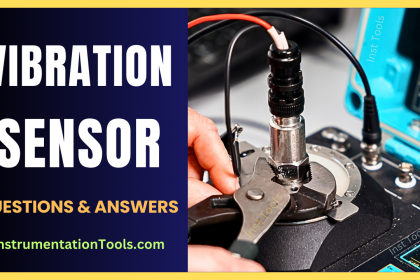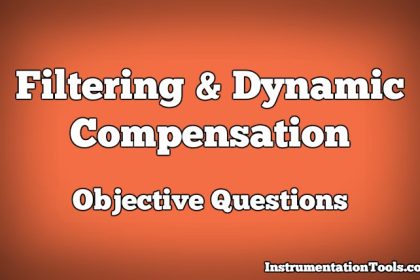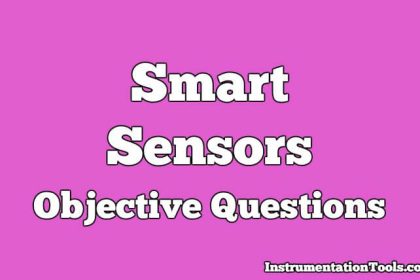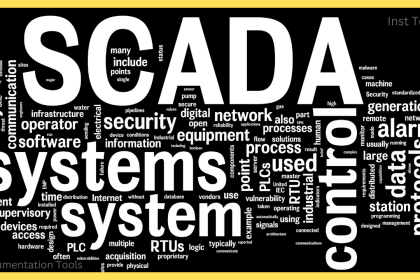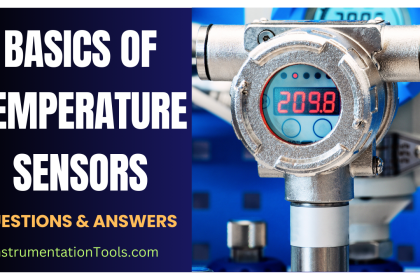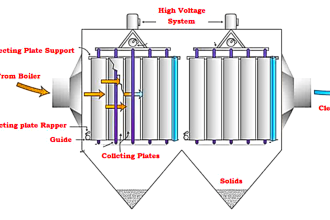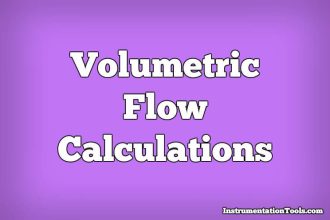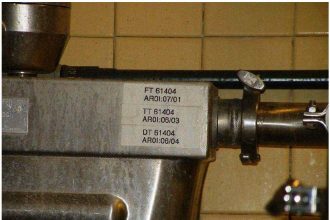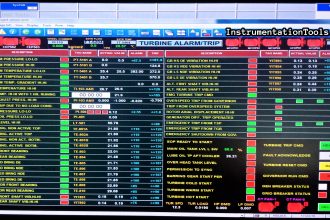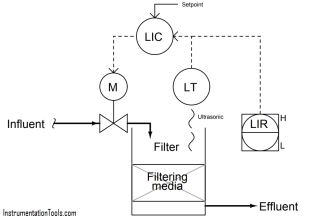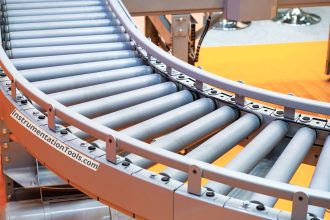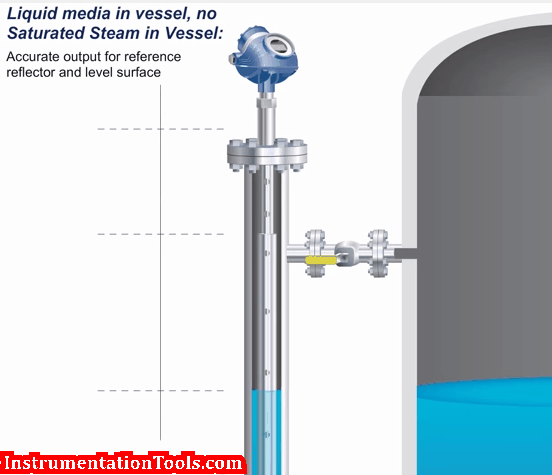In this article, we shared the flow and level measurement quiz questions and answers for instrumentation, electrical, and electronics engineers.
Flow Measurement Quiz
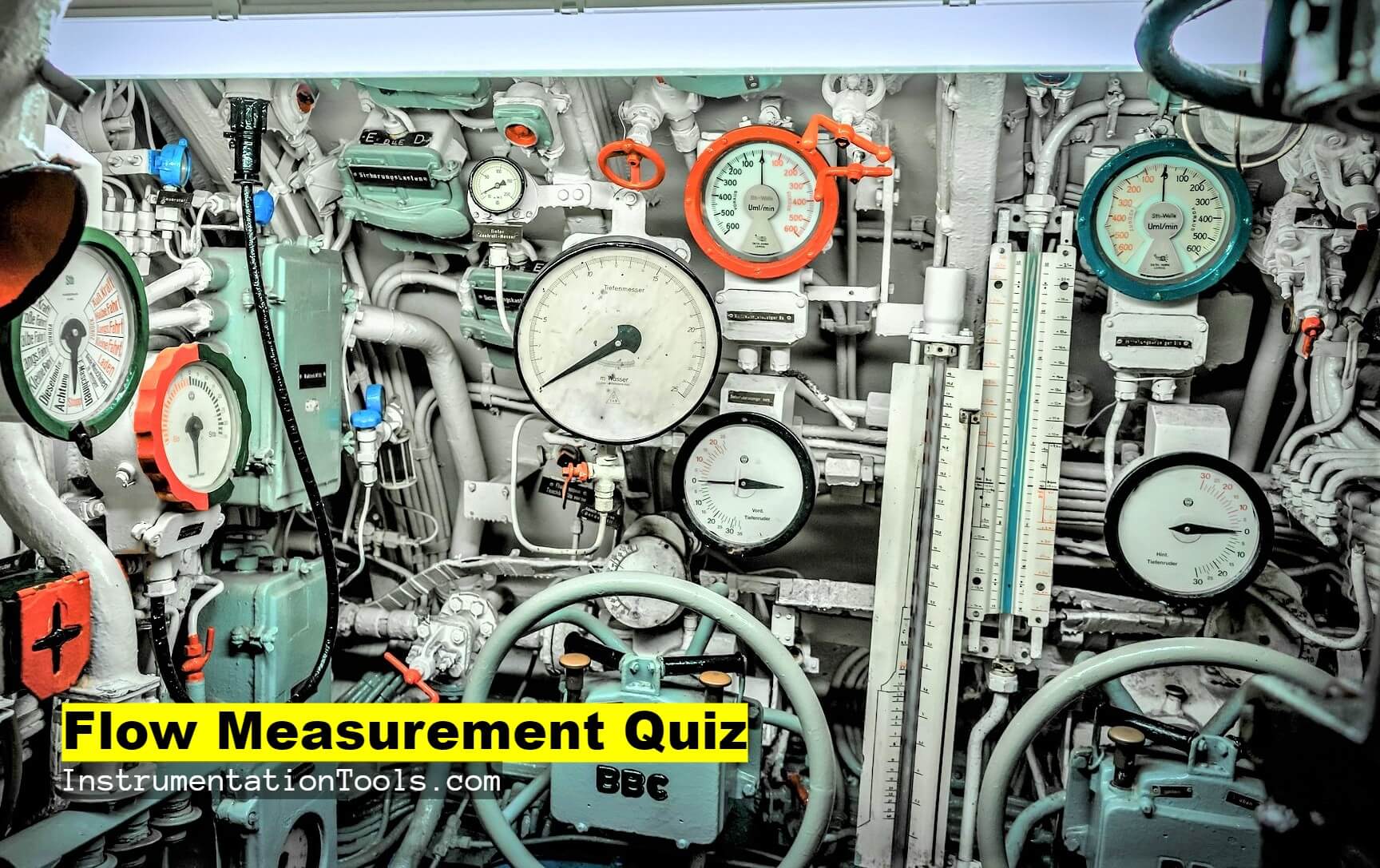
The below list provides all the multiple-choice questions (MCQ) related to the flow measurement.
Answers are available at the bottom of the article.
1. The rate at which fluid flows through a closed pipe can be determined by
| A) | Determining the mass flow rate |
| B) | Determining the volume flow rate |
| C) | Either Determining the mass flow rate or Determining the volume flow rate |
| D) | None of these answers |
2. Conveyor-based methods are used for the measurement of the flow of
| A) | All of these answers |
| B) | Solids |
| C) | Liquid |
| D) | Gas |
3. For the measurement of the flow rate of liquid, the method used is
| A) | Thermal mass flow measurement |
| B) | Bourdon tube |
| C) | Conveyor-based methods |
| D) | Coriolis method |
4. The devices used for flow obstruction is/are
| A) | All of these answers |
| B) | Orifice plate |
| C) | Venturi tube |
| D) | Flow nozzle and dall flow tube |
5. The device which is used for making temporary measurements of flow is
| A) | Pitot static tube |
| B) | Orifice plate |
| C) | Venturi |
| D) | Dull flow tube |
6. The instrument which is not suitable for the application in the automatic control scheme
| A) | Orifice plate |
| B) | Pitot static tube |
| C) | Rotameters |
| D) | Rotary piston meter |
7. Example of a positive displacement meter is
| A) | Turbine meters |
| B) | Venturi |
| C) | Rotary piston meter |
| D) | Variable area flowmeter |
8. Turbine meters are generally preferred for
| A) | High viscosity and low flow measurements |
| B) | High viscosity and high flow measurements |
| C) | Low-viscosity and high flow measurements |
| D) | Low viscosity and low flow measurements |
9. The flow meter which is replacing the differential pressure meters in its applications is
| A) | Electromagnetic flow meters |
| B) | Vortex-shedding flow meter |
| C) | Ultrasonic flow meters |
| D) | All of these answers |
10. Dipsticks are used for the
| A) | Flow measurement |
| B) | Level measurement |
| C) | Pressure measurement |
| D) | Displacement measurement |
11. The most common application of float system is
| A) | To monitor the flow of liquid |
| B) | All of these answers |
| C) | To monitor the flow of solid |
| D) | To monitor the fuel tank level in motor vehicle |
12. Capacitive devices are used for the level measurement of
| A) | Both Only liquid and Solid in powdered form |
| B) | Solid in powdered form |
| C) | Only liquid |
| D) | None of these answers |
13. In ultrasonic level gauge, the ultrasonic source is placed at the
| A) | Middle of the vessel containing the liquid |
| B) | Bottom of the vessel containing the liquid |
| C) | Far from the vessel containing the liquid |
| D) | Top of the vessel containing the liquid |
14. If the ambient temperature is doubled and pressure fluctuates, then the transmission time of radar through the air is
| A) | Almost unaffected and remains same |
| B) | Decreases |
| C) | None of these answers |
| D) | Increases |
15. In radiation methods, the detector system is located at
| A) | Outside a liquid filled tank |
| B) | The top of the liquid filled tank |
| C) | Middle of the liquid filled tank |
| D) | The bottom of liquid filled tank |
16. A vibrating level sensor consists of
| A) | One piezoelectric oscillators |
| B) | Four piezoelectric oscillators |
| C) | Three piezoelectric oscillators |
| D) | Two piezoelectric oscillators |
17. Contact devices used for the measurement of level are
| A) | More reliable then devices which does not make contact with the material |
| B) | Less reliable then devices which does not make contact with the material |
| C) | Less reliable then devices which makes contact with the material |
| D) | More reliable then devices which makes contact with the material |
18. Instrument which is capable of discriminating temperature differences of even 0.1 degrees Celsius is
| A) | Fiber-optic level sensors |
| B) | Thermography |
| C) | Vibrating level sensors |
| D) | Laser method |
19. In fiber-optic level sensors, the amount of light loss depends on
| A) | Amount of light which is reflected back |
| B) | Amount of light which is not reflected back |
| C) | The proportion of cable that is not in the liquid |
| D) | The proportion of cable that is submerged in the liquid |
Level Measurement Quiz
The below list provides all the multiple-choice questions (MCQ) related to the level measurement.
Answers are available at the bottom of the article.
1. In closed container type level measuring system, pressure at top of container is due to _____________
| A) | Liquid pressure |
| B) | Atmospheric pressure |
| C) | Vacuum pressure |
| D) | Vapor pressure |
2. Which of the following is correct for a level to force conversions?
| A) | Level difference should be gradual |
| B) | Liquid at constant density distribution |
| C) | Liquid should be highly viscous |
| D) | Liquid with different density distribution |
3. Which of the following conversions take place in float element?
| A) | Level to force |
| B) | Level to displacement |
| C) | None of these answers |
| D) | Level to voltage |
4. Contact devices used for the measurement of level are
| A) | More reliable then devices which does not make contact with the material |
| B) | Less reliable then devices which does not make contact with the material |
| C) | Less reliable then devices which makes contact with the material |
| D) | More reliable then devices which makes contact with the material |
5. A d/p cell used to measure liquid level has a “suppressed zero.”
This means:
| A) | The transmitter is located below the 0% liquid level mark |
| B) | The elevation of the vessel is below sea level |
| C) | The transmitter uses filter circuits to suppress noise to a zero level |
| D) | The liquid is less dense than water |
| E) | The transmitter is located above the 0% liquid level mark |
6. In closed container type level measuring system, pressure at top of container is due to ______________
| A) | Liquid pressure |
| B) | Atmospheric pressure |
| C) | Vapor pressure |
| D) | Vacuum pressure |
7. Which of the following conversions take place in float element?
| A) | None of these answers |
| B) | Level to force |
| C) | Level to voltage |
| D) | Level to displacement |
8. In ______________ system, float whose weight greater than liquid to be displaced is used.
| A) | Inverse float system |
| B) | Magnifying float system |
| C) | Displacer system |
| D) | None of these answers |
9. Which of the following devices are used for a level to force conversion?
| A) | Membrane |
| B) | Load cell |
| C) | Voltmeter |
| D) | Diaphragm |
10. What will happen if the float becomes lighter?
| A) | System becomes less efficient |
| B) | None of these answers |
| C) | Density variations becomes more important |
| D) | Density variations becomes less important |
11. Suppose a storage vessel holds a liquid of unpredictable density.
Identify which level measurement technology will not maintain accurate measurement of liquid height in the vessel as the liquid density changes:
| A) | Differential pressure transmitter |
| B) | Guided-wave radar |
| C) | Float and tape |
| D) | Sightglass |
| E) | Ultrasonic |
12. Which of the following represents pressure of a liquid column with constant density?
| A) | None of these answers |
| B) | ϱg |
| C) | ϱh |
| D) | ϱgh |
13. Calculate the LRV and URV for this ΔP-based liquid level measurement system.
Calculate LRV and UR
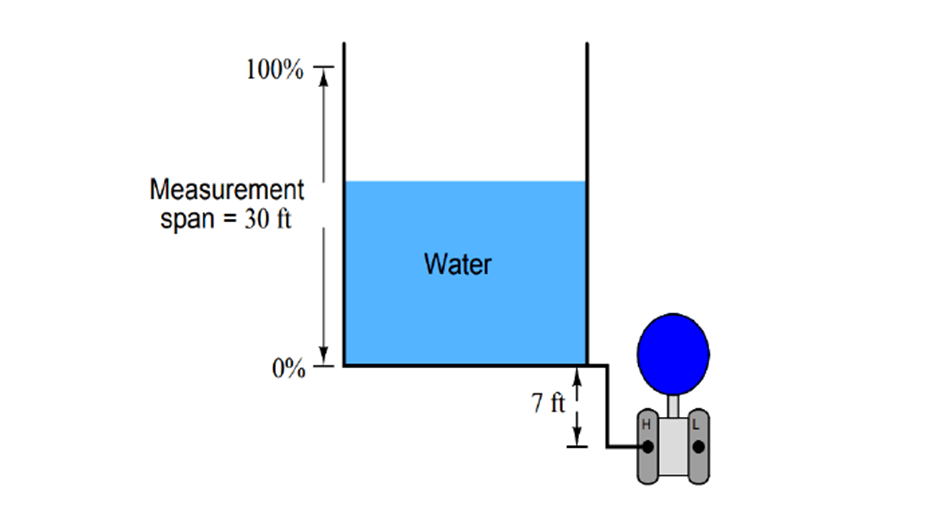
| A) | LRV = 0” H2O ; URV = 360” H2O |
| B) | LRV = 84” H2O ; URV = 444” H2O |
| C) | LRV = 444” H2O ; URV = 0” H2O |
| D) | LRV = 0” H2O ; URV = 444” H2O |
| E) | LRV = 7” H2O ; URV = 37” H2O |
14. A displacer-type level transmitter has a cylindrical displacer 30 inches long and 2.5 inches in diameter.
When fully submerged in a petroleum fuel (Gf = 0.82), how much buoyant force will the displacer generate?
| A) | 5.320 pounds |
| B) | 6.488 pounds |
| C) | 4.363 pounds |
| D) | 17.45 pounds |
| E) | 2.792 pounds |
15. For float element, uniformity of density is important.
| A) | True |
| B) | False |
16. Diaphragm element is used for a level to pressure conversion.
| A) | True |
| B) | False |
17. The following liquid level switch will only function with liquids that are liquid level switch
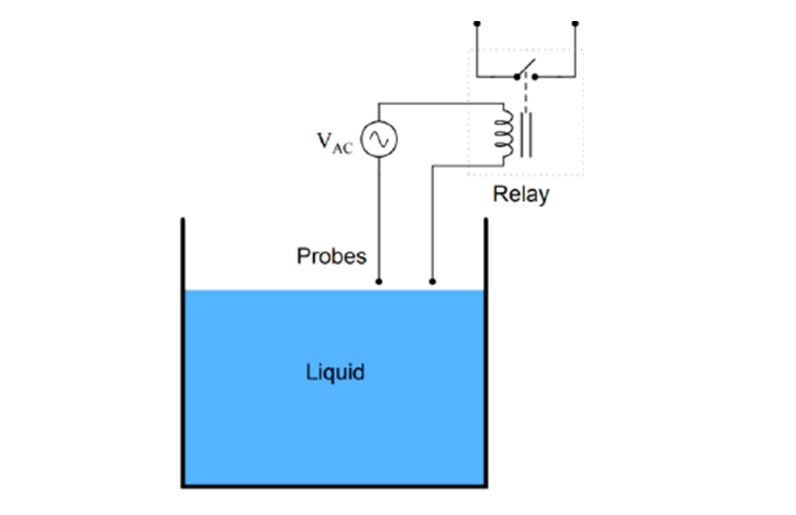
| A) | Optically transparent |
| B) | Absolutely pure (i.e. not a solution) |
| C) | In a state of laminar flow |
| D) | Denser than water |
| E) | Electrically conductive |
18. Which of the following level-measurement technologies cannot be adapted to measure solid (powder) level in a vessel?
| A) | Displacer |
| B) | Float and tape |
| C) | Ultrasonic |
| D) | Radar |
| E) | Load cell |
19. For float element, uniformity of density is important.
| A) | True |
| B) | False |
20. Which of the following represents pressure of a liquid column with constant density?
| A) | ϱh |
| B) | ϱgh |
| C) | None of these answers |
| D) | ϱg |
21. The main advantage of a “dip tube” or “bubbler” system for level measurement is that:
| A) | It compensates for changes in liquid density |
| B) | It isolates the pressure transmitter from the process fluid |
| C) | It can measure both solid and liquid levels |
| D) | It always elevates and never suppresses the calibration range |
| E) | It is less expensive to operate than a direct-connected transmitter |
22. Which of the following represents correct relation for pressure in manometer type level measuring system?
| A) | ϱmhm– ϱy |
| B) | (ϱm– ϱy)g |
| C) | (ϱmhm– ϱy)g |
| D) | (ϱmhm– ϱ)g |
23. A guided-wave radar transmitter is able to measure liquid interface levels based on differences of between the two liquids.
| A) | Density |
| B) | Speed of light |
| C) | Dielectric constant |
| D) | Ionization potential |
| E) | Temperature |
24. What will happen if the float becomes lighter?
| A) | Density variations becomes more important |
| B) | System becomes less efficient |
| C) | None of these answers |
| D) | Density variations becomes less important |
25. If the specific gravity of the liquid inside the vessel increases, what aspects of the transmitter’s calibration will we need to change in order to maintain accurate liquid level measurement?
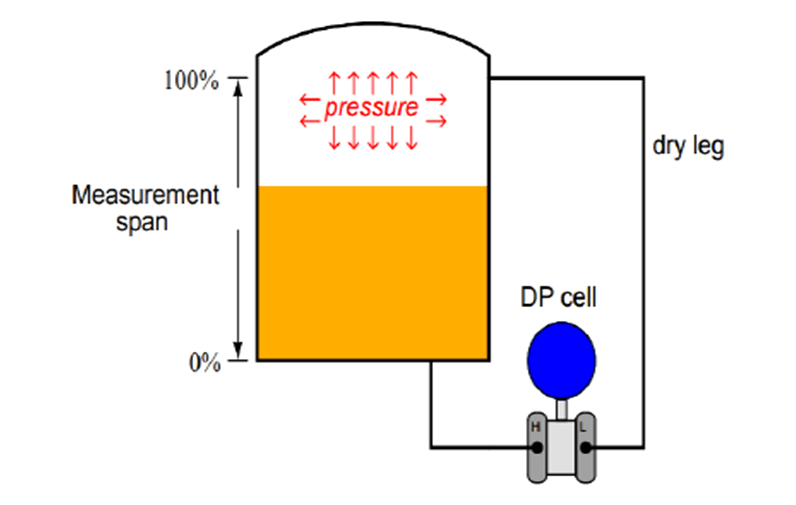
| A) | We will need to change the transmitter’s LRV and URV |
| B) | We will need to change the transmitter’s linearity and zero |
| C) | We will need to change the transmitter’s linearity and span |
| D) | We will need to change the transmitter’s LRV and linearity |
| E) | We will need to change the transmitter from linear to square-root characterization, and adjust the zero |
26. In ______________ system, float whose weight greater than liquid to be displaced is used.
| A) | Magnifying float system |
| B) | Inverse float system |
| C) | None of these answers |
| D) | Displacer system |
27. Diaphragm element is used for a level to pressure conversion.
| A) | True |
| B) | False |
Click Here for Answers
If you liked this article, then please subscribe to our YouTube Channel for Electrical, Electronics, Instrumentation, PLC, and SCADA video tutorials.
You can also follow us on Facebook and Twitter to receive daily updates.
Next Quiz:
- Transducers MCQ
- RTD Questions & Answers
- Measuring Instruments MCQ
- Industrial Instrumentation MCQ
- Distributed Control System MCQ

